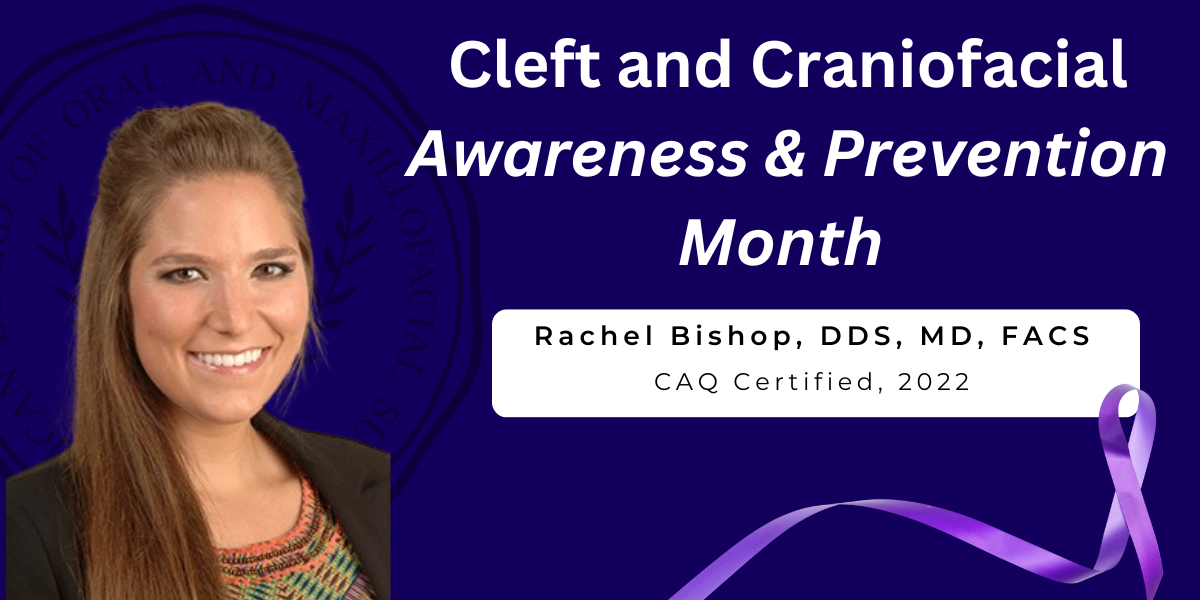
Jul 18, 2025
Lifelong Impact: Dr. Rachel Bishop’s Insights on Craniofacial Care
Cleft and craniofacial patients require a dedicated, multidisciplinary team, one that includes the expertise of an Oral and Maxillofacial Surgeon. The long-term care of these patients, including during key developmental stages of childhood and adolescence, is critical to ensuring a successful outcome. Rachel Bishop, DDS, MD, FACS shares her insights on this important topic.
For cleft and craniofacial patients, what specialties are represented in the multidisciplinary team?
Cleft and craniofacial patients require comprehensive, long-term care that spans multiple specialties. Cleft teams are usually composed of a surgeon, a speech language pathologist, and an orthodontist. Teams that also include craniofacial care usually also include a neurosurgeon and a psychologist. Other specialty referrals may include: nutrition, pediatric dentistry, audiology, genetics, child life, social work, ophthalmology, radiology, and otolaryngology.
How do the specialists on the team contribute to patient care?
Each specialist on the cleft and craniofacial team plays a vital role in improving patient outcomes by addressing specific functional, developmental, and psychosocial needs. This encompasses surgical reconstruction and speech development to hearing, dental care, and emotional support. Through coordinated, age-appropriate interventions across childhood and adolescence, the team ensures comprehensive care that promotes optimal health, communication, appearance, and quality of life.
What role do Oral and Maxillofacial Surgeons play in the treatment plan for these patients?
Oral and Maxillofacial Surgeons play a critical role in the treatment of cleft and craniofacial patients by performing essential surgical procedures across multiple stages of care. Their responsibilities include cleft lip and palate repair, alveolar bone grafting to support tooth eruption and stabilize the maxilla, craniofacial surgery to correct facial bone deformities, orthognathic surgery to improve bite and facial symmetry, cleft rhinoplasty to improve nasal form and function, placement of dental implants, and cranial vault surgery to address skull abnormalities, contributing to both functional outcomes and facial aesthetics throughout the patient’s development.
What is the value of long-term postoperative care for these patients?
Long-term postoperative care is essential for cleft and craniofacial patients because their needs evolve as they grow, often requiring multiple interventions over time. Ongoing monitoring and support ensure proper speech development, dental alignment, facial growth, hearing, and psychosocial well-being. This ultimately leads to better functional outcomes, improved self-esteem, and a higher quality of life.
Can you share a meaningful patient story?
There’s a young patient with a cleft who I see regularly at Shriners, and she always brings a spark of joy to the clinic. Despite the many surgeries she’s faced, her courage and positivity never waver. One of our little rituals is swapping glasses whenever she visits; she picks my glasses off of my face to try on, and I try on hers. These moments of connection and playfulness remind me daily that beyond the medical care, building trust and joy is just as important on this journey.
What impact do you hope to have on your patients and their families?
I hope to have a lasting, positive impact on my patients and their families by providing compassionate, comprehensive care that supports each child’s growth, development, and confidence. I strive to be a consistent source of guidance and reassurance for parents throughout their child’s cleft or craniofacial journey, helping them navigate challenges, celebrate milestones, and feel supported every step of the way.
What do you wish the public knew about patients with craniofacial disorders?
I wish the public better understood that patients with craniofacial disorders are just like any other children. They have the same hopes, talents, and potential, but may face unique medical and social challenges along the way. Increased awareness and empathy can help reduce stigma, promote inclusion, and ensure that these patients and their families feel seen, supported, and valued in every part of the community.